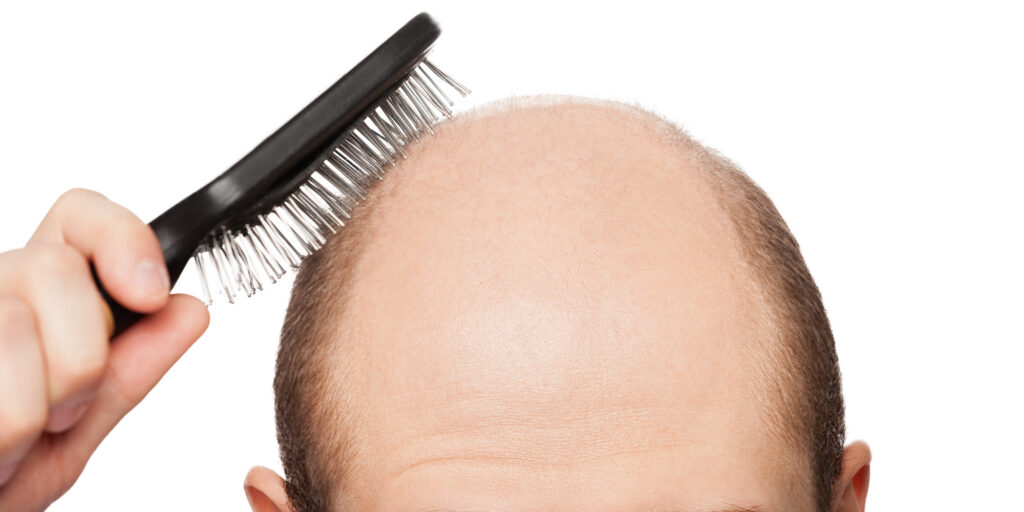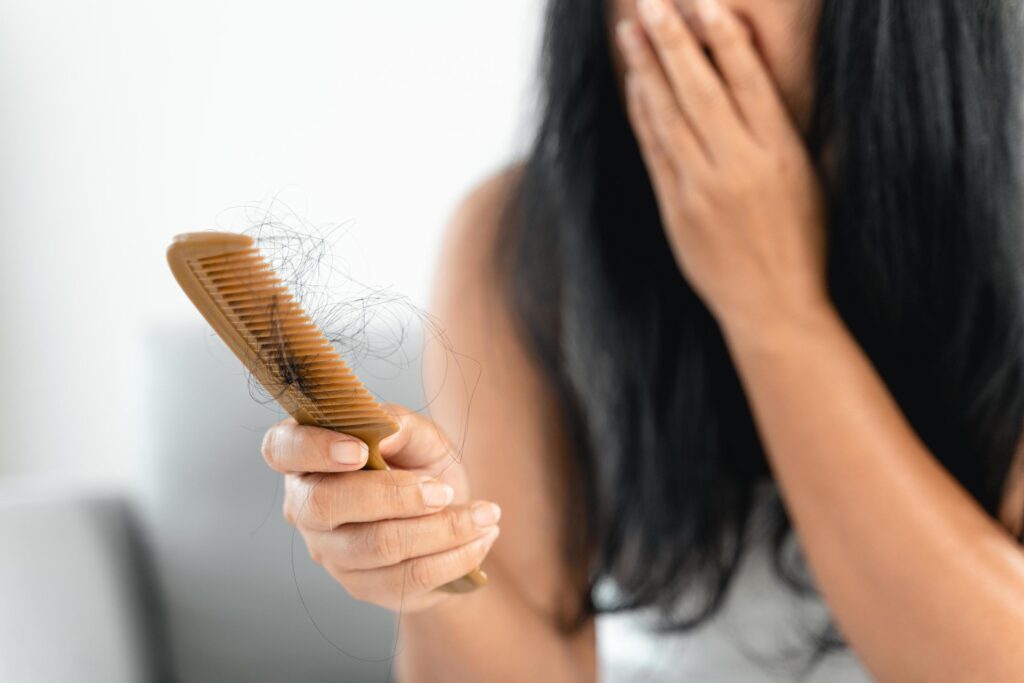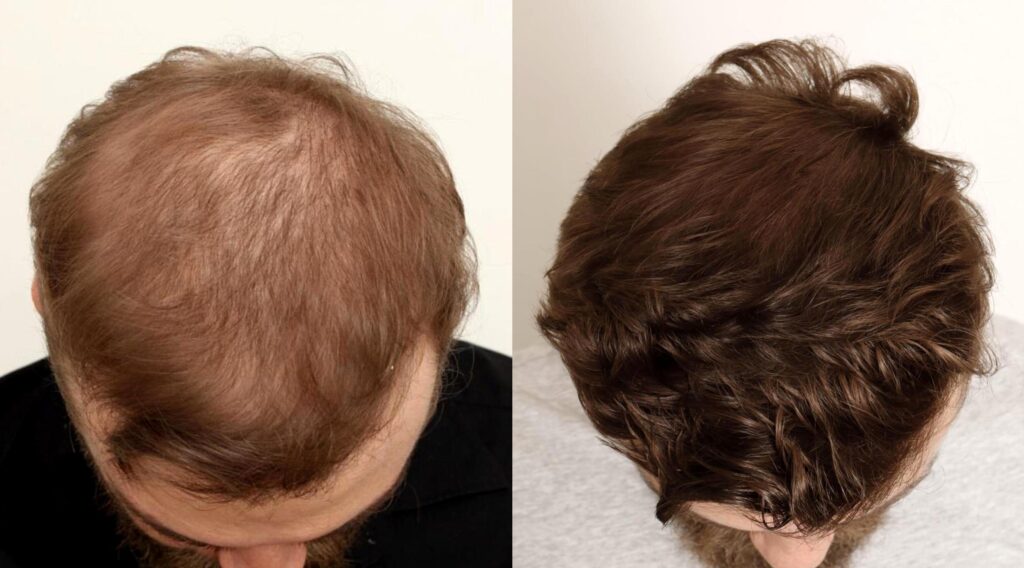Introduction to Hair Loss
Nearly everyone goes through hair loss at some stage in their life. For some, it’s a mild inconvenience, but for others, it can be a source of significant distress and emotional turmoil. What’s important to remember is that losing a few hairs each day is normal. However, when it turns into noticeable thinning, bald patches, or clumps falling out, that’s when alarm bells start ringing.
Hair represents more than its physical structure—it’s deeply tied to how we see ourselves. From confidence to cultural significance, the role of hair runs deep. Unfortunately, due to various reasons—from genetics to stress—hair loss can strike anyone at any time.
This detailed guide will cover all the essential information you should understand about hair loss. From the earliest signs to watch out for, to identifying the root cause, and finally discovering modern, effective treatments, this article is your one-stop solution to understand and manage hair loss.
Why Hair Loss is a Common Concern
If hair loss concerns you, rest assured that many others share the same worry. Every day, hair loss affects millions of individuals worldwide. Research suggests that approximately 85% of men and 40% of women will face visible hair thinning during their lifetime. Those statistics are truly remarkable.
What makes it so concerning is not just the cosmetic aspect but also the psychological impact. Hair is closely linked with beauty, youth, and self-esteem. In severe instances, hair loss can lead to anxiety, isolation, and even depression. People often associate hair loss with aging or poor health, which adds an emotional layer to an already challenging condition.
The rise of digital media and the culture of appearances have only intensified these concerns. People are more conscious than ever about how they look, making even slight hair thinning feel like a crisis.
Thankfully, science and medicine have advanced significantly in understanding hair loss. Today, we have access to more knowledge and solutions than ever before, making early intervention possible and often highly effective.

Who is Affected by Hair Loss?
Hair loss doesn’t discriminate. While it’s more frequently associated with men, women are not immune. It can affect individuals of all ages, backgrounds, and genders. However, the way hair loss appears can vary from person to person.
- Men often experience male pattern baldness, typically starting at the temples and receding to form an “M” shape.
- Women, on the other hand, usually face diffuse thinning over the crown without a receding hairline. This makes their hair loss more subtle but equally distressing.
Children and teenagers can also experience hair loss, often due to conditions such as alopecia areata, tinea capitis (scalp ringworm), or trichotillomania (a hair-pulling disorder). Postpartum women may notice significant hair shedding due to hormonal changes, while older adults often see hair thinning as a part of aging.
In short, hair loss is a universal issue. The good news? Knowing who’s affected and why helps us better tackle the problem.
Recognizing the Symptoms of Hair Loss
The sooner you identify hair loss, the better your chances of preventing it from worsening. Many people miss the early signs because they attribute shedding to normal hair fall. But how do you know when it’s more than just a bad hair day?
Here are some of the telltale early symptoms:
- Excess hair on your pillow or shower drain
- Noticeable thinning or a widening part
- Receding hairline, especially around the temples
- Bald patches, particularly in circular patterns
- Slower hair growth than usual
If your ponytail feels thinner or you notice that your scalp is becoming more visible, these are signs your hair might be thinning. Also, increased hair breakage or finding more strands in your brush than usual can be a subtle but important indicator.
It’s also important to monitor hair texture. Hair that feels weaker, brittle, or dry may be more prone to falling out. These symptoms might not scream “hair loss” at first, but they often precede more visible thinning.
When to Seek Medical Advice
Let’s be real: most of us wait too long before asking for help. When it comes to hair loss, early medical intervention can make a world of difference.
If you’re experiencing any of the following symptoms, it’s time to consult a doctor:
- Sudden or patchy hair loss
- Accompanied by itching, redness, or inflammation
- Losing hair in clumps or large amounts
- Family history of baldness and early symptoms in yourself
- Significant hair loss after childbirth, surgery, or major illness
You should also seek help if the emotional toll becomes overwhelming. If hair loss is affecting your confidence, mental health, or social life, professional support is crucial.
Remember, not all hair loss is permanent. Identifying the cause early often leads to full recovery. A dermatologist or trichologist can conduct tests, ask about your medical history, and guide you to the right treatment plan.
Understanding the Causes of Hair Loss

Genetic Predisposition
Genetics play a massive role in hair loss. If your parents or grandparents experienced balding, chances are higher that you might too. This inherited condition is known as androgenetic alopecia or pattern baldness.
Men typically notice a receding hairline or bald spots, while women may experience diffuse thinning. This type of hair loss develops slowly and often begins in your twenties or thirties. As time passes, the hair follicles become smaller, leading to finer, shorter hair until growth ceases entirely.
The process is driven by dihydrotestosterone (DHT), a derivative of testosterone that attacks hair follicles. While you can’t change your DNA, treatments like minoxidil and finasteride can slow down or even reverse the process.
Understanding your genetic risk allows you to act early, before the damage becomes irreversible.
Hormonal Changes and Imbalances
Hormones are like your body’s silent conductors. When they’re out of tune, chaos follows—and hair loss is often one of the side effects. Women are especially prone to hair loss during hormonal imbalance:
- Pregnancy and postpartum
- Menopause
- Polycystic Ovary Syndrome (PCOS)
- Thyroid disorders
In men, a drop in testosterone or a spike in DHT can lead to thinning and receding hairlines. Even subtle shifts in hormone levels can wreak havoc on your scalp.
The good news? Once balance is restored—whether naturally or through medication—hair can return to its previous volume and strength.
Treating the root hormonal imbalance is key. That’s why it’s essential to consult a healthcare provider who can run hormone panels and guide you through corrective therapies.
Common Types of Hair Loss
Androgenetic Alopecia
This type of hair loss is the most prevalent and is commonly known as male-pattern or female-pattern baldness. It’s a hereditary condition that typically progresses slowly over the years.
- In men: Begins with a receding hairline and thinning at the crown, eventually leading to baldness.
- In women: Leads to overall thinning without a receding hairline, usually starting at the crown.
It is mainly caused by hereditary factors and hormonal activity, particularly dihydrotestosterone (DHT), which gradually reduces the size of hair follicles.
Treatment options include:
- Minoxidil (Rogaine): Over-the-counter topical treatment approved for both men and women.
- Finasteride (Propecia): Oral prescription medication for men.
- Hair transplants: In severe cases, surgical solutions offer permanent results.
While there’s no cure, early treatment can significantly slow down or even reverse hair loss progression.
Alopecia Areata
This is an autoimmune disorder where the body’s immune system attacks hair follicles, causing sudden hair loss in round, smooth patches. It can affect anyone—men, women, and even children.
Symptoms include:
- Hair loss may appear as circular, smooth patches on the scalp or other areas of the body.
- Tingling or burning sensation before hair falls out
- A prickling or burning feeling often occurs just before the hair begins to shed.
Often, hair regrowth happens naturally without the need for treatment. For cases that continue or return frequently, several treatment options are available, such as:
- Corticosteroid injections
- Topical immunotherapy
- Minoxidil
Alopecia areata is unpredictable, but with proper medical care, many patients achieve regrowth.
Telogen Effluvium
This condition is among the leading causes of short-term hair shedding, particularly affecting women. It happens when numerous hair follicles prematurely shift into the resting (telogen) stage, resulting in significant hair fall.
Triggers include:
- Major stress or trauma
- Childbirth
- Surgery or illness
- Rapid weight loss
- Certain medications
Unlike genetic hair loss, telogen effluvium is typically reversible. Once the triggering event has passed, hair usually starts to regrow within 3–6 months. In the meantime, a balanced diet, stress management, and gentle hair care can help.
Traction Alopecia
This condition results from constant tension or pulling on the hair. It’s often caused by certain hairstyles like tight ponytails, braids, cornrows, or the excessive use of extensions and weaves.
Over time, the stress damages the follicles, leading to thinning or bald patches, especially around the hairline or temples.
Early signs include:
- The impacted region may feel sore or experience persistent itching.
- Broken hairs near the root
- Receding edges or bald spots
If caught early, traction alopecia is reversible. Allowing your hair to rest and adjusting your styling habits can promote growth. In more advanced cases, hair might not regrow without medical treatment or surgery.
Medical Approaches to Regrow Hair

If you’re experiencing persistent or noticeable thinning, a medical solution might be helpful. Here are some doctor-recommended options:
1. Topical Treatments (Minoxidil)
- Applied directly to the scalp.
- Encourages blood circulation to hair roots.
- Used consistently, it can help regrow hair over a few months.
2. Prescription Pills (Finasteride)
- Taken orally (for men only).
- It lowers the levels of DHT, a hormone known to contribute to hair thinning.
3. PRP Injections
- Involves using your blood plasma to stimulate hair regrowth.
- A dermatologist performs this treatment in several sessions.
🌿 Natural Remedies You Can Try at Home
For mild hair fall, these home-based approaches may help strengthen your roots:
✅ Coconut or Castor Oil
Massage gently into the scalp to improve blood flow and nourishment.
✅ Aloe Vera Gel
Naturally soothes the scalp and may promote hair health.
✅ Onion Juice
Though smelly, it’s believed to support regrowth due to sulfur content.
✅ Balanced Nutrition
Include foods rich in:
- Protein: Eggs, dairy, lentils
- Iron & Zinc: Spinach, seeds
- Omega-3s: Fish, flaxseeds
- Biotin: Nuts, whole grains
🧘 Healthy Habits to Protect Your Hair
- Limit heat styling and harsh dyes.
- Avoid tight hairstyles like ponytails or braids that pull the roots.
- Reduce stress with relaxation techniques like yoga or journaling.